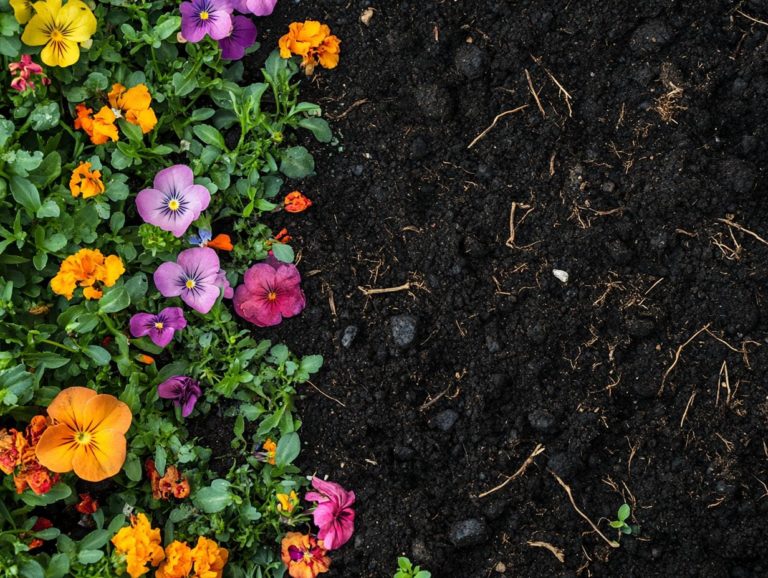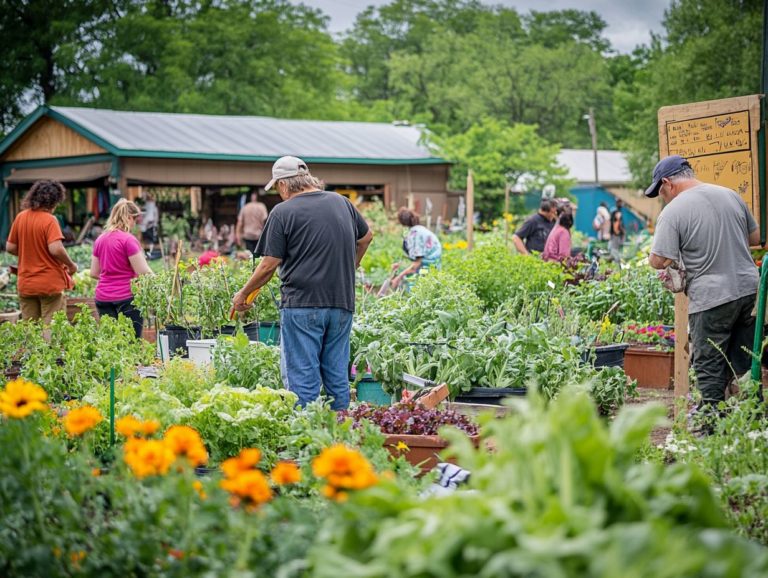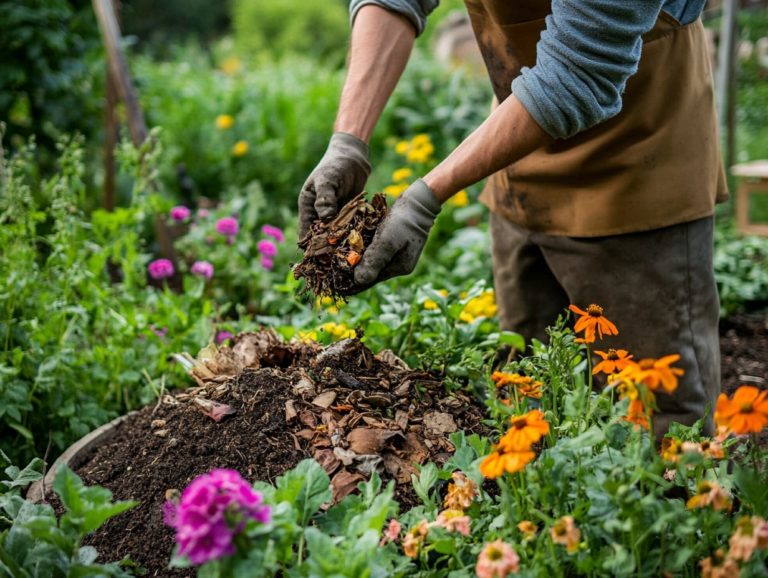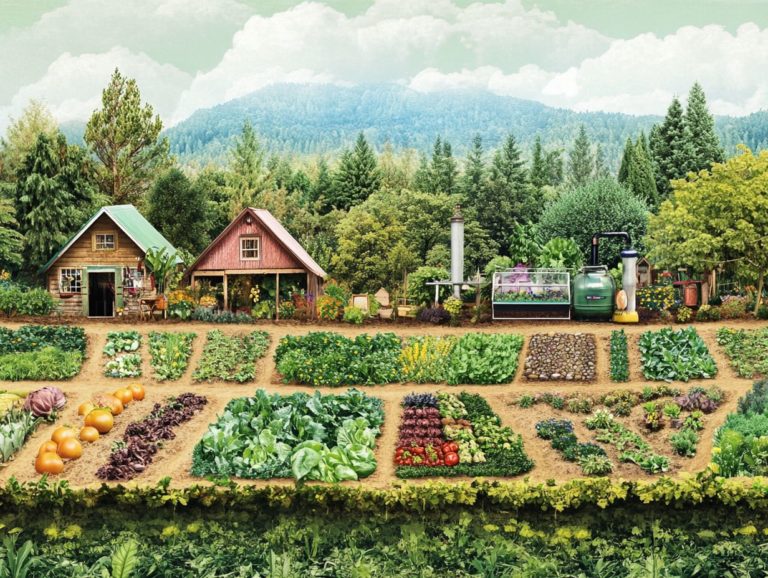How to Design for Resilience in Your Garden?
Creating a resilient garden is very important, particularly in the face of climate change challenges. Let s explore the key elements of resilience in garden design! This article will guide you through its core benefits alongside practical factors such as climate, soil quality, and plant diversity.
You ll find insightful strategies for adapting to extreme weather events, incorporating sustainable practices, and ensuring your garden s resilience over time. Start planning your resilient garden today to enjoy its beauty and benefits!
Contents
- Key Takeaways:
- The Importance of Resilience in Garden Design
- Factors to Consider in Creating a Resilient Garden
- Designing for Extreme Weather
- Incorporating Sustainable Practices
- Maintaining Resilience in Your Garden
- Frequently Asked Questions
- What is resilience in gardening?
- Why is it important to design for resilience in your garden?
- How can I incorporate diversity into my garden design for resilience?
- What are some key elements to consider when designing for resilience in my garden?
- Can I still have a visually appealing garden while designing for resilience?
- How can I maintain a resilient garden?
Key Takeaways:
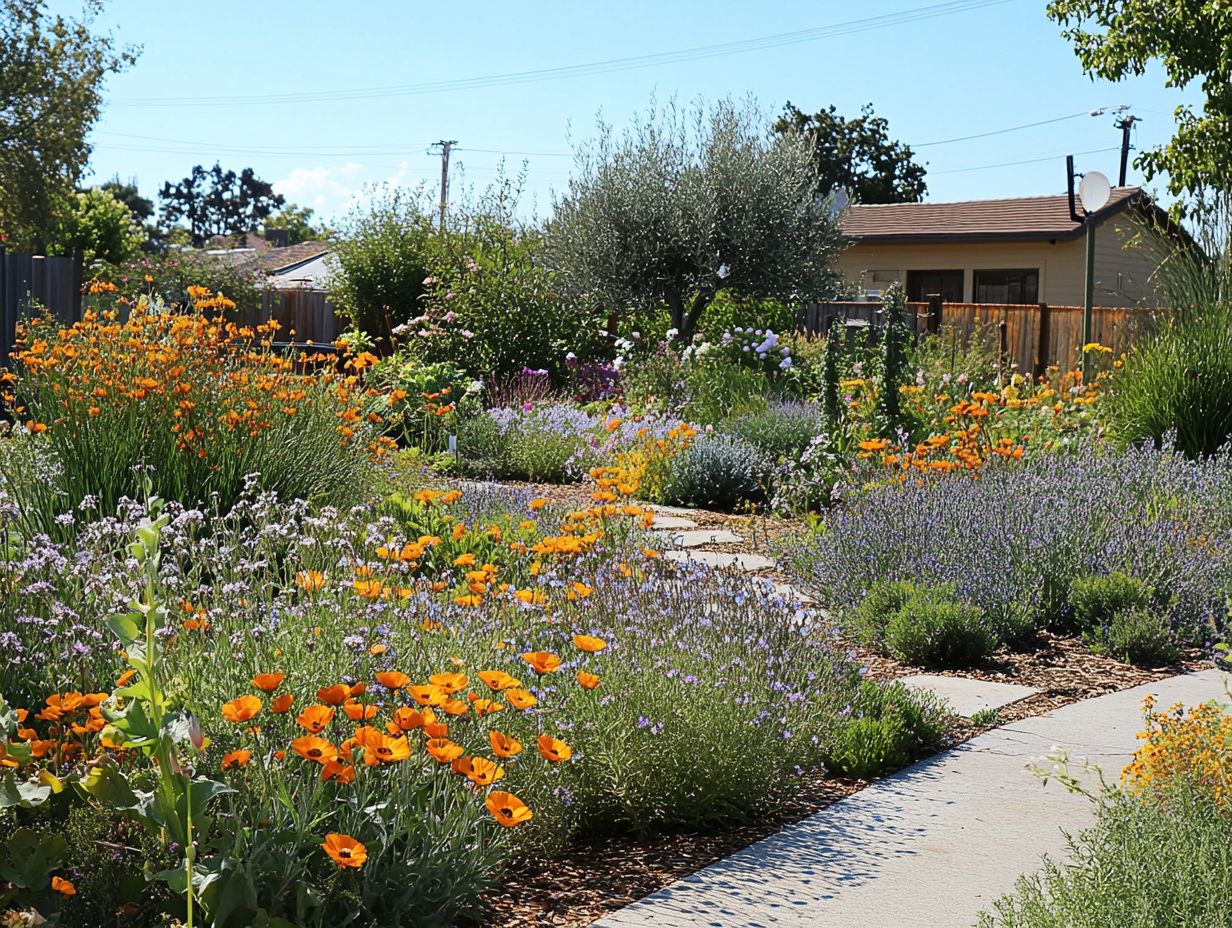
- Design a resilient garden by considering factors such as climate, soil quality, and plant diversity.
- Prepare for extreme weather by implementing strategies for dealing with heat, drought, and heavy rain.
- Maintain resilience through regular maintenance and incorporating sustainable practices like water conservation and native plants.
The Importance of Resilience in Garden Design
Resilience in garden design is very important, particularly as climate change continues to reshape landscapes across Atlanta, Georgia. As a gardener, you re likely recognizing the shift towards climate-resilient gardening techniques.
By embracing these innovative strategies, you have the opportunity to cultivate gardens that flourish even amid unpredictable weather patterns. This not only allows you to create eco-friendly spaces that promote biodiversity but also supports healthy soil ecosystems.
Adopting this approach enhances your garden planning. It ensures effective watering practices and promotes optimal drainage essential elements for sustaining plant life through the changing seasons.
Why Resilience Matters in Your Garden
Understanding resilience in gardening means appreciating the advantages of diverse planting, effective pest management, and proactive disease control all key to cultivating a flourishing garden.
This comprehensive approach enables you to create ecosystems that nurture a variety of plants and organisms, ultimately enhancing biodiversity. By incorporating a blend of native and adaptive plants, you not only elevate the aesthetics of your space but also strengthen its natural defenses.
A resilient garden will dramatically reduce pests and diseases by fostering beneficial insects and employing organic practices, thereby minimizing the need for chemical solutions.
These strategies ensure your garden remains vibrant and sustainable, allowing you to savor the fruits of your labor while contributing to a healthier environment.
Factors to Consider in Creating a Resilient Garden
Creating a resilient garden necessitates thoughtful consideration of various factors, such as soil quality, drainage, plant selection, and effective maintenance strategies.
In Atlanta, Georgia, where diverse climates can present unique challenges, it’s essential for you to prioritize native plants and organic treatment methods. These choices not only bolster crop production but also enhance soil health.
Understanding local soil conditions and selecting plants that thrive in the regional climate will significantly improve your garden s resilience, cultivating an ecosystem that thrives amidst environmental stresses.
Climate and Location
The climate and location are crucial elements that shape the success of your garden. They impact everything from plant selection to the gardening techniques you employ for optimal growth.
In regions like Atlanta, Georgia, where the humid subtropical climate reigns supreme, consider local microclimates and seasonal variations as you design your landscape. The combination of hot summers and mild winters creates an environment that supports a rich diversity of flora, including resilient perennials like coneflowers and black-eyed Susans that thrive in the heat.
Employing effective water-saving gardening techniques can significantly bolster your water conservation efforts, while mulching will help retain moisture in the soil during those scorching summer months. Understanding the local soil composition is crucial for selecting the right plants that can flourish without unnecessary stress.
Soil Quality and Drainage
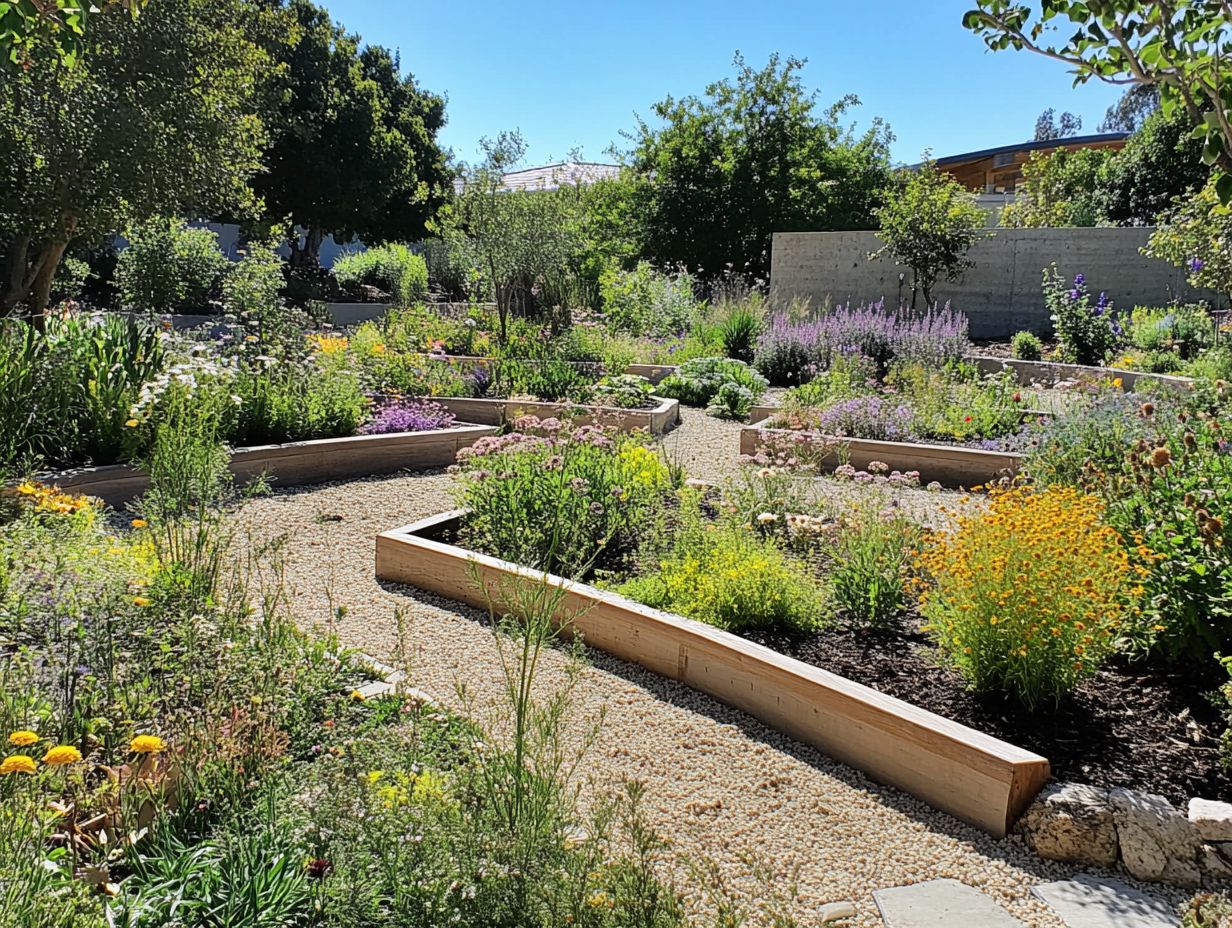
Healthy soil and good drainage form the bedrock of a strong garden, fostering vigorous plant growth and preventing the pitfalls of waterlogging and nutrient deficiencies.
Boost your soil quality today by adding natural materials such as:
- Compost
- Peat moss
- Aged manure
These enhancements enrich your soil structure, improving its moisture retention while still allowing excess water to drain away. Adopting practices like mulching and crop rotation, which means changing the type of plants in a certain area each season, helps keep your soil healthy and will further strengthen the soil, helping it stay fertile.
By understanding the intricate relationship between soil health and good drainage, you can significantly influence your garden maintenance, leading to flourishing plants and a vibrant ecosystem.
Plant Selection and Diversity
Selecting a diverse array of plants, including perennials and those that attract beneficial insects and pollinators, is essential for cultivating a resilient garden that champions biodiversity.
This variety not only elevates the visual appeal of your garden but also fosters a balanced ecosystem where different species can flourish together. By incorporating flowering plants that bloom at various times, you can ensure a steady supply of nectar and pollen for vital pollinators like bees and butterflies.
Diverse plantings naturally deter pests, reducing the need for chemical interventions that can harm your garden’s health. This synergy among plants, insects, and other wildlife creates a sustainable environment, enabling your garden to withstand environmental stresses, adapt to changes, and maintain ecological harmony.
Ultimately, understanding the interconnectedness of these elements highlights the profound value of promoting plant diversity. Choose diverse plants now to create a vibrant and lively garden!
Designing for Extreme Weather
Designing for extreme weather conditions involves employing targeted strategies that tackle both heat and drought while also preparing for heavy rain and flooding, ensuring your garden not only survives but thrives in any scenario.
In areas like Atlanta, Georgia, where temperature swings and erratic weather patterns are part of the landscape, incorporating raised beds and rain gardens can be highly effective.
These features enhance drainage and optimize water resource management, minimizing damage during extreme weather events and promoting the overall health of a resilient garden.
Strategies for Dealing with Heat and Drought
Implementing strategies to tackle heat and drought in your garden involves thoughtful practices, such as watering wisely and selecting drought-resistant plants. This approach not only creates an eco-friendly garden but also conserves precious resources.
To elevate these efforts, consider using mulch; it s a fantastic way to retain soil moisture and curb evaporation during those sweltering months. Opting for native species that flourish in your local climate not only supports sustainable gardening but also reduces your reliance on chemical fertilizers and cuts down on maintenance.
Establishing a rainwater collection system can be a game-changer, providing a natural and efficient watering resource that aligns perfectly with eco-conscious practices. By understanding the specific needs of your plants and adapting to the ever-changing climate conditions, you can cultivate a thriving garden that positively impacts the environment.
Preparing for Heavy Rain and Flooding
Preparing for heavy rain and flooding is crucial for resilient garden design. You need strategies that enhance drainage and protect the overall integrity of your landscape.
By embracing techniques like installing swales or rain gardens, you can effectively manage excess water while nurturing the ecosystem. Implementing organic treatments such as compost and mulch will improve your soil structure, allowing it to absorb more rainfall without succumbing to erosion.
Landscape management is equally vital. Reducing hard surfaces that don’t allow water to soak in can significantly boost water infiltration. Incorporating perforated drainage pipes and permeable paving ensures that rainwater flows smoothly, minimizing the risk of flooding.
Ultimately, a thoughtful approach not only protects your plants but also cultivates a thriving environment that can withstand nature’s challenges.
Incorporating Sustainable Practices
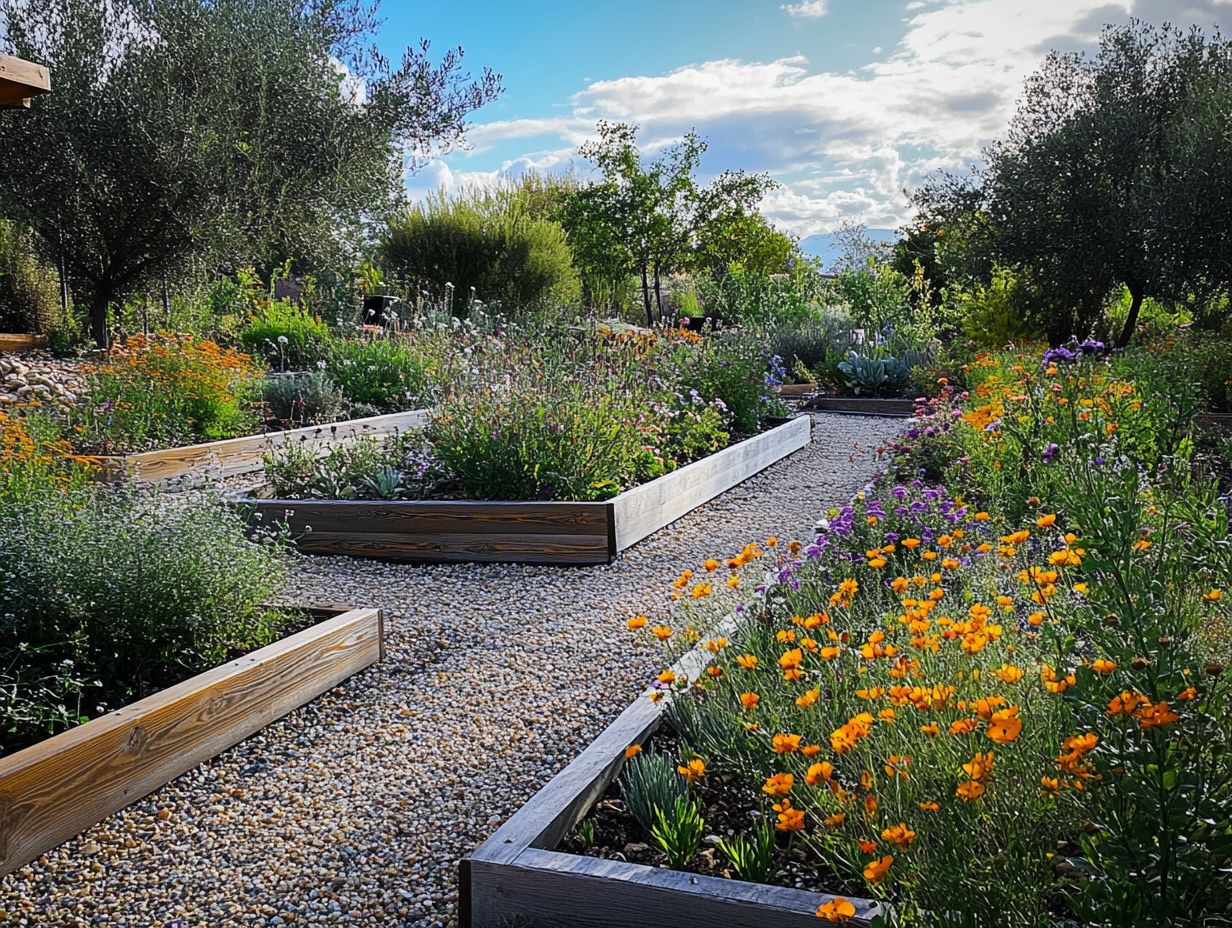
Incorporating sustainable practices into your garden design is essential for fostering resilience. This can be achieved by employing effective water conservation techniques, selecting native plants, and utilizing natural pest control methods that promote ecological balance.
By embracing these strategies, you not only enhance the beauty of your garden but also contribute to a healthier environment.
Water Conservation Techniques
Implementing effective water conservation techniques is vital for keeping your garden thriving, especially during times of drought when wise watering becomes crucial.
Adopting methods like rain gardens that capture and utilize runoff during heavy rains, along with using efficient irrigation systems such as drip irrigation, can significantly reduce water waste. You ll be amazed at how much water you can save!
Establishing a rain garden enhances biodiversity and improves soil health, making your garden more vibrant and sustainable over time. These practices contribute to a substantial reduction in water consumption, allowing your garden to thrive even in challenging conditions.
Using Native Plants and Natural Pest Control
Utilizing native plants and natural pest control methods, like attracting beneficial insects, is essential for nurturing a resilient garden ecosystem that reduces the need for chemical interventions.
By cultivating local flora, you not only enhance the beauty of your landscape but also create habitats that support a vibrant diversity of wildlife. These practices lead to improved soil health and efficient use of water, making them environmentally responsible choices that are also economically beneficial over time.
Incorporating natural pest control strategies, such as introducing predatory insects or employing companion planting, can effectively diminish pest populations while fostering a balanced ecosystem. Ultimately, embracing these methods cultivates a harmonious relationship between your garden and its surrounding environment, enriching biodiversity and preserving local wildlife.
Maintaining Resilience in Your Garden
Maintaining resilience in your garden demands a commitment to regular maintenance and a keen adaptability to shifting environmental conditions. By applying effective gardening techniques, you can skillfully manage pests and diseases, ensuring your garden thrives through every season.
Start implementing these strategies today and watch your garden flourish!
Regular Maintenance and Adaptation
Regular maintenance and adaptation in your garden are essential for sustaining its resilience. This allows you to respond swiftly to challenges such as pest outbreaks and disease threats.
By adopting active care, you can ensure that your plants not only survive but truly thrive throughout the seasons. This means regularly checking the leaves for any signs of distress and enriching your soil with organic amendments to maintain its health.
Creating a welcoming habitat for beneficial insects that serve as natural predators is also important. Implementing strategies like crop rotation and companion planting planting different crops together to help each other grow can significantly reduce the risk of infestations and foster a balanced ecosystem within your garden.
You can use organic treatments like neem oil or diatomaceous earth to enhance your disease management efforts while minimizing harmful chemical exposure. This creates a sustainable and vibrant garden experience that you can truly enjoy!
Frequently Asked Questions
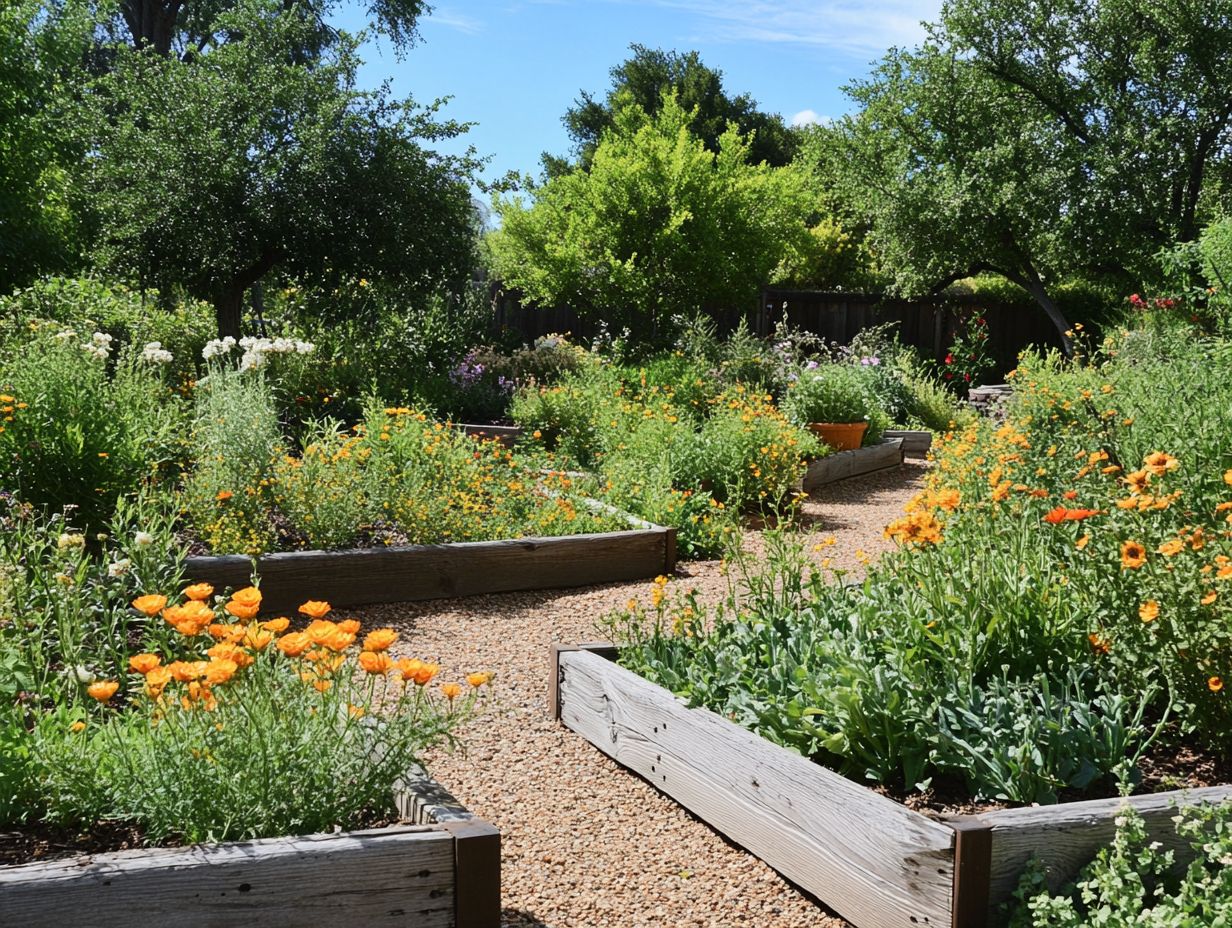
What is resilience in gardening?
Resilience in gardening refers to designing a garden that can withstand and recover from environmental stressors such as extreme weather, pests, and disease. Start planning your resilient garden today!
Why is it important to design for resilience in your garden?
Designing for resilience ensures that your garden can survive and thrive in challenging conditions. To enhance this effort, consider learning how to implement sustainable practices in your garden, which reduces the risk of losing your plants and crops.
How can I incorporate diversity into my garden design for resilience?
Incorporating diverse plant species in your garden can increase its resilience. Different plants have different tolerances, helping each other withstand stressors.
What are some key elements to consider when designing for resilience in my garden?
Some key elements to consider include selecting the right plants for your climate and using natural pest control methods. Implementing sustainable gardening practices is also essential.
Can I still have a visually appealing garden while designing for resilience?
Absolutely! You can create a beautiful garden by incorporating a variety of colors, textures, and plant heights while still ensuring its resilience through strategic design and planning.
How can I maintain a resilient garden?
Maintaining a resilient garden involves regular maintenance and monitoring for any signs of stress or disease. You may need to adjust your garden design as needed to better withstand changing conditions.


